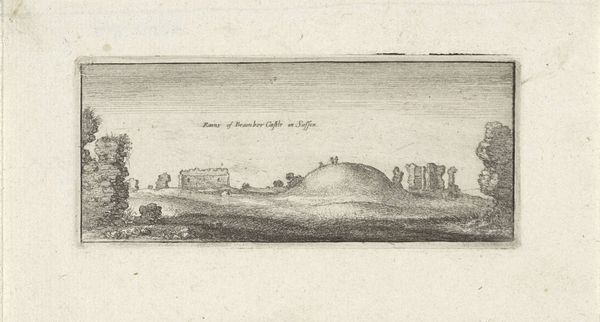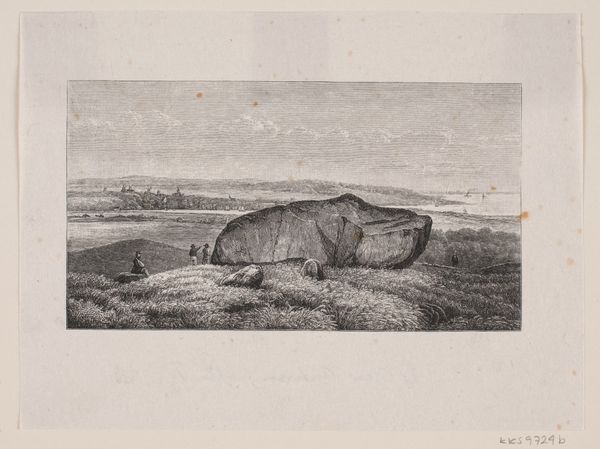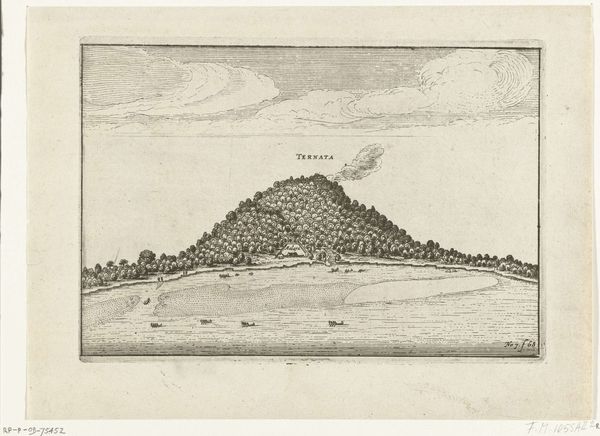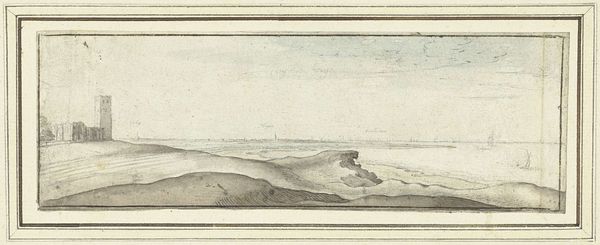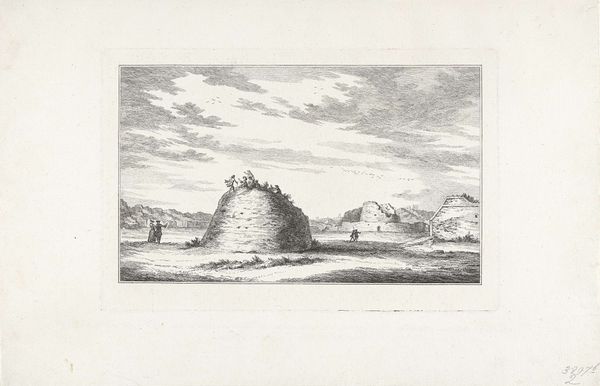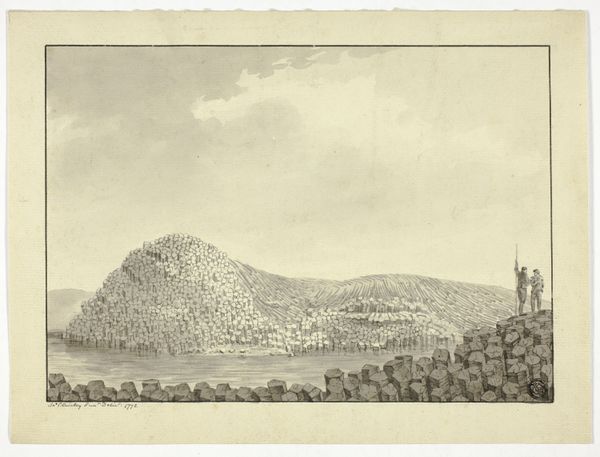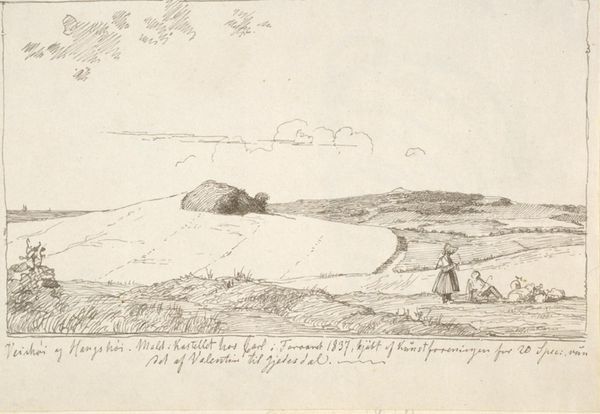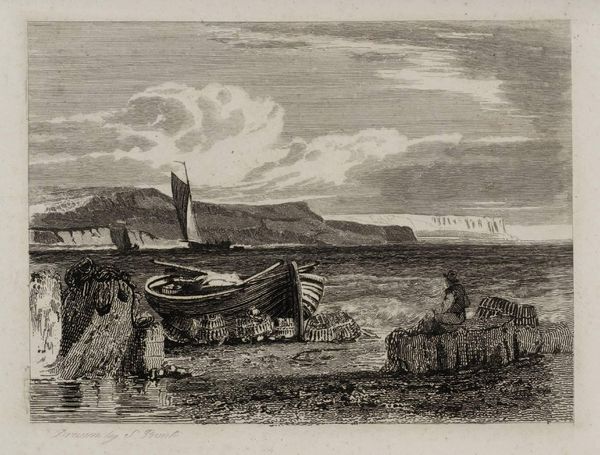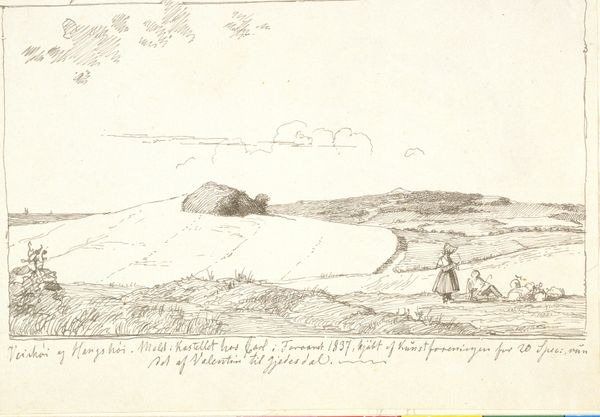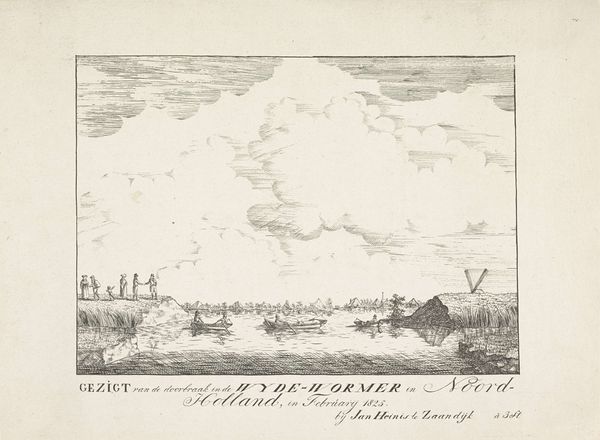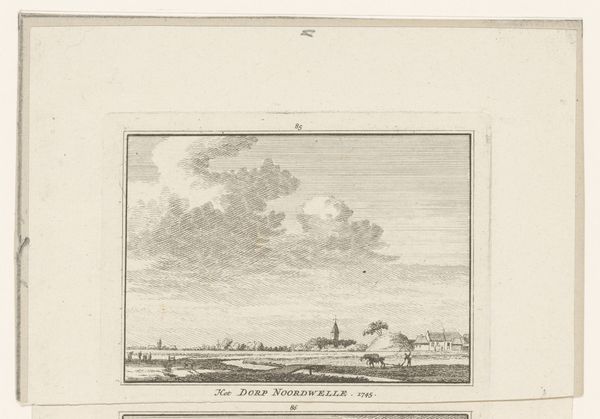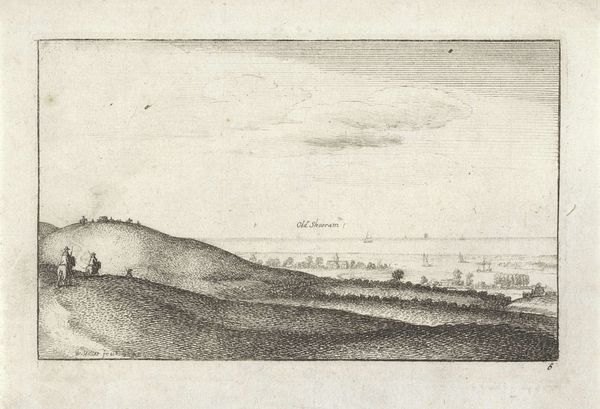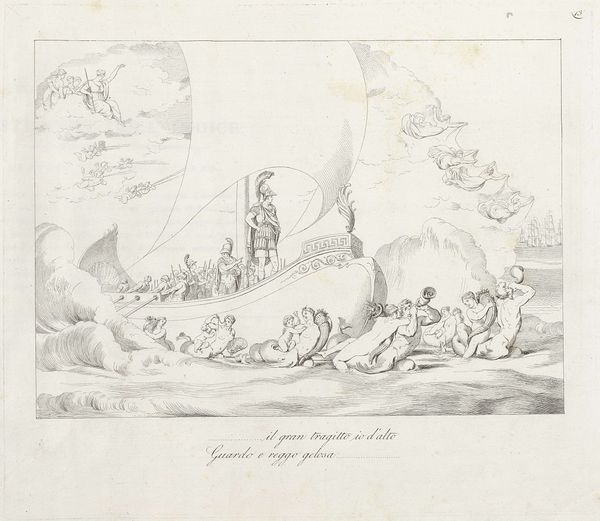
Dimensions: height 136 mm, width 237 mm
Copyright: Rijks Museum: Open Domain
Editor: This engraving from 1764, titled "Potvis gestrand bij Egmond aan Zee," depicts a beached whale with a crowd of onlookers. I’m struck by how the artist, Vincent Jansz. van der Vinne, captured the sheer scale of the whale against the human figures. It seems like the picture is not as interested in realism and more in geometry. What stands out to you, looking at this print? Curator: The strength of this work, for me, lies in its structural organization. Observe how Van der Vinne divides the composition. The large whale acts as the dominant horizontal form, immediately establishing a clear, almost stark, division of space. Notice also the clouds, landscape, the crowd and the lines of their bodies, can you see what structure it establishes? Editor: Yes, now that you point it out I see it. They work together to establish another horizontal band that repeats this motif of division, only on the higher portion of the engraving, creating more rhythm in the piece. Are those sorts of decisions usually calculated for effect, or did the artist just think it looks nice? Curator: Formal decisions are never arbitrary. Note how the lower register, the inscription panel, reiterates the whale image in miniature. This echoes the horizontal emphasis while adding a layer of commentary—perhaps on perspective, or the act of observing. Editor: It's interesting to see how these layers add meaning, just from the shape, placement and use of forms. Curator: Indeed. Van der Vinne's strategic use of line, mass, and spatial relationships is ultimately what conveys the work's underlying theme. And it provides a basis to dig deeper! Editor: That really opened my eyes to appreciate the visual composition. Thanks so much!
Comments
No comments
Be the first to comment and join the conversation on the ultimate creative platform.
